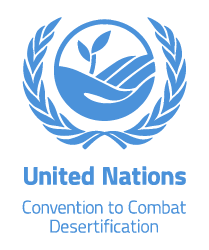Location
The United Nations Convention to Combat Desertification in Those Countries Experiencing Serious Drought and/or Desertification, Particularly in Africa (UNCCD) is a Convention to combat desertification and mitigate the effects of drought through national action programs that incorporate long-term strategies supported by international cooperation and partnership arrangements.
Members:
Resources
Displaying 321 - 325 of 585Climate change and land degradation: Bridging knowledge and stakeholders
The UNCCD 3rd Scientific Conference, held from 9 to 12 March 2015 in Cancún, Mexico, used a novel, participatory approach to explore the various forms of knowledge that link biophysical and social systems, the vulnerabilities of these systems and potential pathways to reach sustainable land management.
Drylands: Sustaining Livelihoods and Conserving Ecosystem Services. A policy brief based on the Sustainable Management of Marginal Drylands (SUMAMAD) project
The drylands of the world occur on every continent, covering some 41% of the terrestrial surface. One third
of humanity inhabits these harsh degrading landscapes, eking out a living through adaptive processes that
have served them well until recent increases of land degradation. Growing pressures from population growth,
Incorporating Land Use Impacts on Biodiversity into Life Cycle Assessment for the Apparel Industry
Inputs of land for raw material production and fabric manufacturing. Such land use has significant implications for biodiversity—the diversity of Earth’s species, which provide critical services such as pollination, water purification, and climate regulation.
Although land use is a major driver of biodiversity loss, there is no easily applicable method for incorporating land use impacts on biodiversity into life cycle assessment (LCA)—a widelyused tool for evaluating potential environmental impacts of a product system.
Rangelands: Conservation and “Land Grabbing” in Rangelands: Part of the Problem or Part of the Solution?
Large-scale land acquisitions have increased in scale and pace due to changes in commodity markets, agricultural investment strategies, land prices, and a range of other policy and market forces. The areas most affected are the global “commons” – lands that local people traditionally use collectively — including much of the world’s forests, wetlands, and rangelands. In some cases land acquisition occurs with environmental objectives in sight – including the setting aside of land as protected areas for biodiversity conservation.
Calculation of the EU Bioenergy land footprint: Discussion paper on land use related to EU bioenergy
targets for 2020 and an outlook for 2030
This paper explores the land footprint related to EU bioenergy consumption and aims to contribute to the discussion on how EU bioenergy targets impact on scarce global land resources, both cropland and forest areas. In the last decade, demand for EU bioenergy has risen significantly, largely driven by political targets and subsidies. Our calculations show that the total land footprint related to EU bioenergy is likely to expand from 44.5 Mha (an area of the size of Sweden) in 2010 to 70.2 Mha (an area of the size of Poland and Sweden combined) in 2030.


